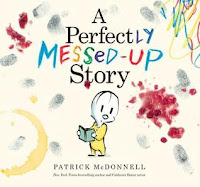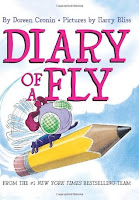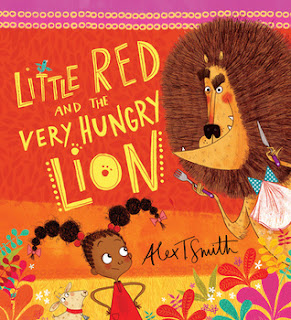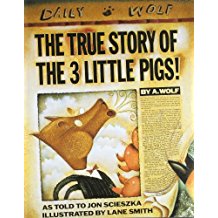Kids Like/Do. I hope you have enjoyed my posts. Thanks for reading!
A DANCE LIKE STARLIGHT: One Ballerina's Dream by Kristy Dempsey
A little black girl, who is living during the time of segregation, dreams of what it would be like to be a ballerina. Her mom works for a dance studio as a seamstress. Sometimes the girl tries on the dance costumes and sometimes she watches the dancers from behind the curtains.
The little girl imitates what she sees the dancers doing and dreams of one day being one stage herself. She is mesmerized when she gets a chance to watch Janet Collins, the first African American ballerina who performed with the Metropolitan Opera.
A little boy calls himself Hug Machine. He hugs everybody and everything, including mailboxes and trees.
But, will he hug prickly things?
This is a great book that kids will relate to, especially the "huggers".
IF YOU EVER WANT TO BRING AN ALLIGATOR TO SCHOOL, DON'T! by Elise Parsley
An alligator might seem like a good thing to bring to school to share for a nature show-and-tell, but if you do it, you will probably wish you hadn't. Alligators are just way more trouble than they are worth.
A few facts about alligators are included in the text of this book, as the alligator is presented for show-and-tell. I think the author and publisher both missed a golden opportunity to make this book more curriculum-friendly by including additional information about alligators. Kids could then use the book just for fun (and it is a fun book!), or they could use the book as reference material about alligators.
Just a thought...
IF YOU EVER WANT TO BRING A PIANO TO THE BEACH, DON'T! by Elise Parsley
From the same author who wrote IF YOU EVER WANT TO BRING AN ALLIGATOR TO SCHOOL, DON'T! comes this delightful book. This time, the young girl wants to take her piano to the beach. Her mother allows her to do so, but she warns her to not lose it.
How can you lose a piano? you might ask. Well, it's like this: First you get it to the beach (which is no easy feat), then you have it sitting in the open where the bird make a mess on it, then you push it into the water to wash it off. Then, you guessed it: It floats away.
Does the little girl get the piano back?
I enjoyed this book, but the ending is just a bit off. I can't tell you the ending as that would give the story away, but let's just say that the mother's reaction just doesn't ring true.
Perhaps you won't agree....
LITTLE BABY BUTTERCUP by Linda Ashman
This is just a delightful book about a day in the life of a toddler. Mom and her baby go through a full day of eating and playing and helping and shopping and all the things moms and kids do together. The colorful, kid-friendly illustrations, coupled with the rhyming text, makes this a sure-to-be favorite for the younger set.
THE AIRPORT BOOK by Lisa Brown
A young boy takes the reader along as he embarks on a trip with his mom, dad and little sister. The boy and his family go to a big airport where there are lots of things to do and see. The boy tells the reader about what he is seeing and doing all along the way, from his house to the airport, onto the plane, into the destination airport and then on his way to his grandparents' house.
If you're a kid about to embark on an airplane for the first time, this is the book for you. The author goes into detail about what to expect when you're a little kid going to a big airport to take a long flight on a big airplane. They've got that aspect well covered. But, I just wanted to point out that the story would be quite different if one were traveling in a small airplane in a small airport.
There were a couple of things about the book that I didn't really like. First of all, the parents tell each other to not forget "Monkey". No one is paying attention when the little girl packs Monkey into her big suitcase. All through the story, the little girl keeps crying for her monkey. She doesn't realize that she can't take the monkey with her on the plane when it is packed in her suitcase. No one really pays any attention to her. I thought that was a little sad. Yes, she is reunited with Monkey at the end of the trip, but I don't like the way that was handled.
Also, there was one place where the text seemed like it was missing a word. Here's the sentence: "You wait until your group is called then walk down the jetway." I think that sentence would be much stronger if it read: "You wait until your group is called and then you walk down the jetway." Just a thought...
But, I did like the way the book comes full circle with the beginning and the ending.
THE MONSTORE by Tara Lazar
When Zack's sister, Gracie, becomes a pest, Zack goes to the Monstore to buy a scary monster, one that will keep her out of his room. That doesn't work, so he buys another one and another one. What can he do to scare his sister away?
A bit of rhyme, a bit of repetition, a bit of alliteration, and great illustrations all add up to a whole lot of fun.
VAMPIRINA BALLERINA by Anne Marie Pace
Even if you're a vampire, you can be a ballerina. But you have to follow some simple rules: You have to practice, practice, practice and not give up, no matter what.
And because you're a vampire, you have to do things a bit differently: You need to take night classes, you should keep your mouth shut, and you must resist the temptation to show off by turning yourself into a bat.
Vampire or not, any little girl who dreams of being a ballerina can identify with Vampirina Ballerina.























